By Max Milano (Travel Writer)
I, like most tourists and expats, must’ve driven past Sagunto a hundred times.
Always between Valencia and Barcelona. Always in a rush. The AP-7 skirts along the Mediterranean, passing citrus groves, factory outlets, beach towns with nondescript condos, and even a Roman aqueduct. But then there’s that hill, the one crowned by an ancient fortress that seems to grow out of the stone itself.
I never stopped. Most tourists don’t.
We fly past at 120 km/h, thinking only of where we’re going. Valencia’s got paella. Barcelona’s got tapas and crema catalana. But Sagunto? Just a sign on the freeway. Maybe we glance up at the castle. Maybe we don’t.
But this summer, I stopped. And I’m telling you now, you should too.
Because Sagunto isn’t just another sleepy Spanish town, it’s the place that lit a fire under Rome, the spark that forced the Republic to make a decision that changed the world and forged an empire.
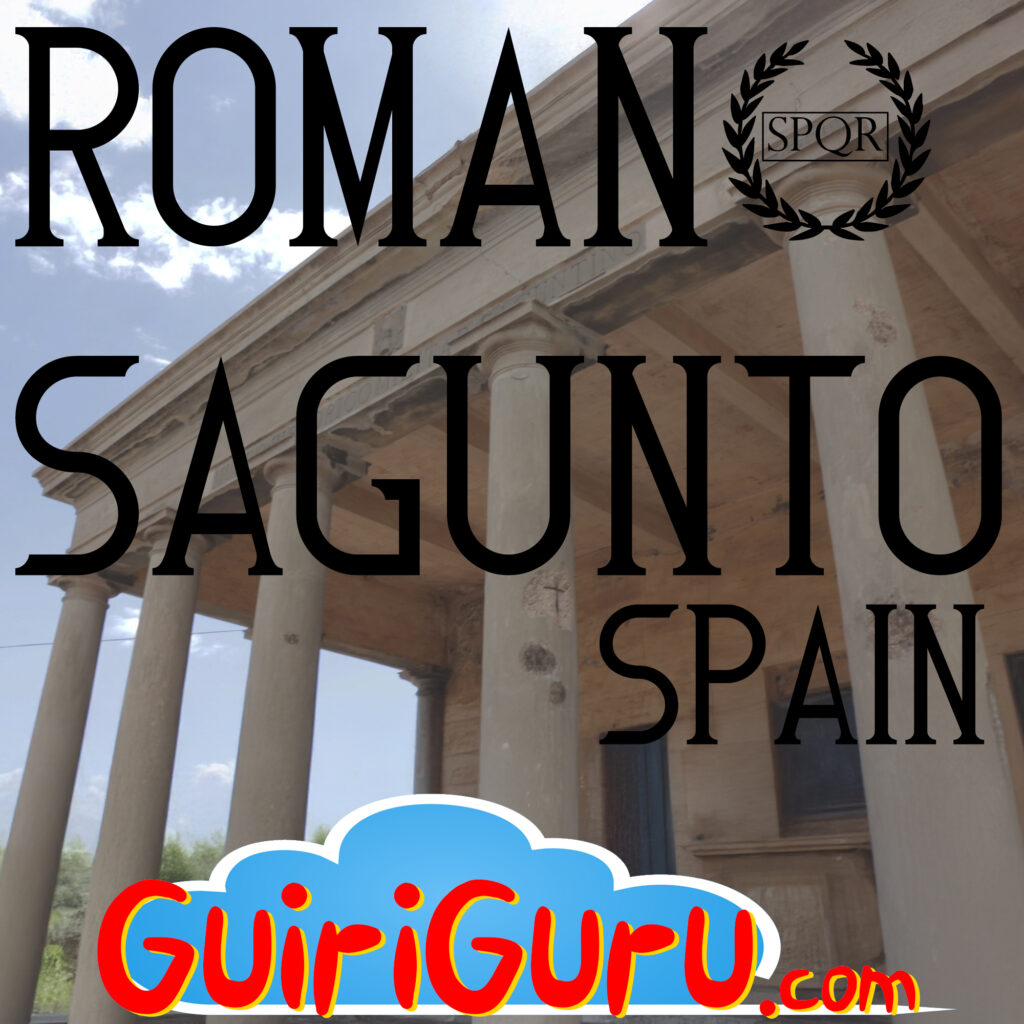
The Fallellos, the Castle, and the Count
We arrive on a Sunday morning. It’s already hot. The kind of heat that gets into your eyelids and bakes your sandals to the pavement.
We haven’t walked five minutes through a local neighborhood when we stumble onto a narrow side street and into a scene of local revelry.
Paella is happening.
A dozen neighbors, shirts off, laughing over cans of beer, are tending a bubbling saffron-colored paella pan the size of a satellite dish. It sits on cinder blocks, flames licking the bottom. You can smell the rabbit and rosemary before you turn the corner.
They’re a Fallas club. The same people who build towering papier-mâché effigies every March and then burn them in the streets. It’s religion. It’s tradition. It’s a reason to drink beer outside and argue about which year had the best falla. And apparently, it’s also an excuse to throw spontaneous Sunday paella cookouts in the middle of July.
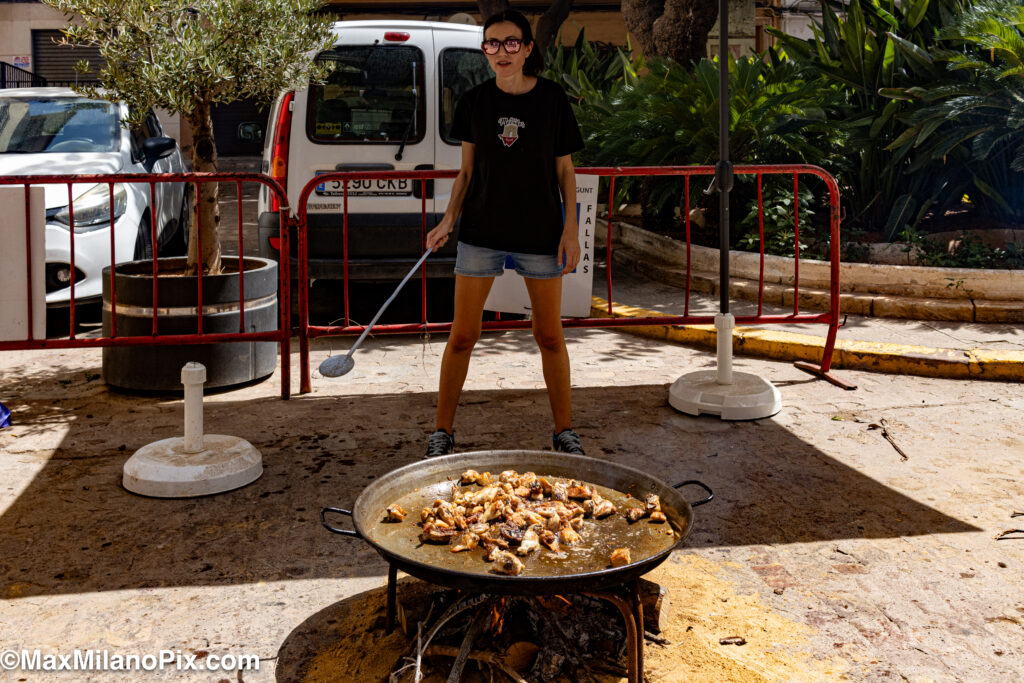
It was by accident, but we’re clearly intruding. Still, they wave us in like long-lost cousins.
“¿De dónde sois?” one man asks, squinting through the paella smoke.
“California,” I say.
“Hostia,” he grinned. “Long way for paella.”
They offered us a plate. We stay for a bit, talking Spanish football and how Sagunto’s history gets ignored.
“You know,” one old man says, flipping a rabbit leg with a stick, “Sagunto is where Rome woke up.”
A City Burned into Memory
He isn´t wrong.
Sagunto (back then called Saguntum) was a thriving Iberian city with Greek tastes. It minted its own coins in Greek letters, drank imported wine, and built temples that wouldn’t look out of place in Athens. It was Iberian by blood, Hellenic by culture, and Roman by allegiance.
And that was the problem.
In 219 BCE, Hannibal Barca, general, warlord, elephant enthusiast, was done playing nice. Rome had already pushed his father Hamilcar out of Sicily. After that, the Carthaginian army had mutinied back home because they hadn’t been paid (as depicted in the historical novel Salammbô by Flaubert). The Romans had even meddled in Iberia, forging alliances like the one with Saguntum, a slap in the face for Carthaginian claims south of the Ebro River.
So, Hannibal laid siege.
For eight brutal months, Saguntum held out, starving, dying, but refusing to surrender. Eventually, Hannibal agreed to meet with the town leaders. He offered them safe passage if they left behind their possessions and vacated the city. The townspeople were considering it.
But Hannibal’s mercenaries got impatient. They broke through the wall in the middle of negotiations. Hannibal, knowing he couldn’t control his men once they were inside, turned into Gary Oldman in Léon: The Professional and gave the order that would echo through history:
“Kill them all.”
Rome knew Sagunto was under siege. Knew their allies were dying. But they hesitated. Debated. Dithered.
And so was born the famous Latin phrase:
“Dum Roma deliberat, Saguntum Perit.”
While Rome deliberates, Sagunto perishes.
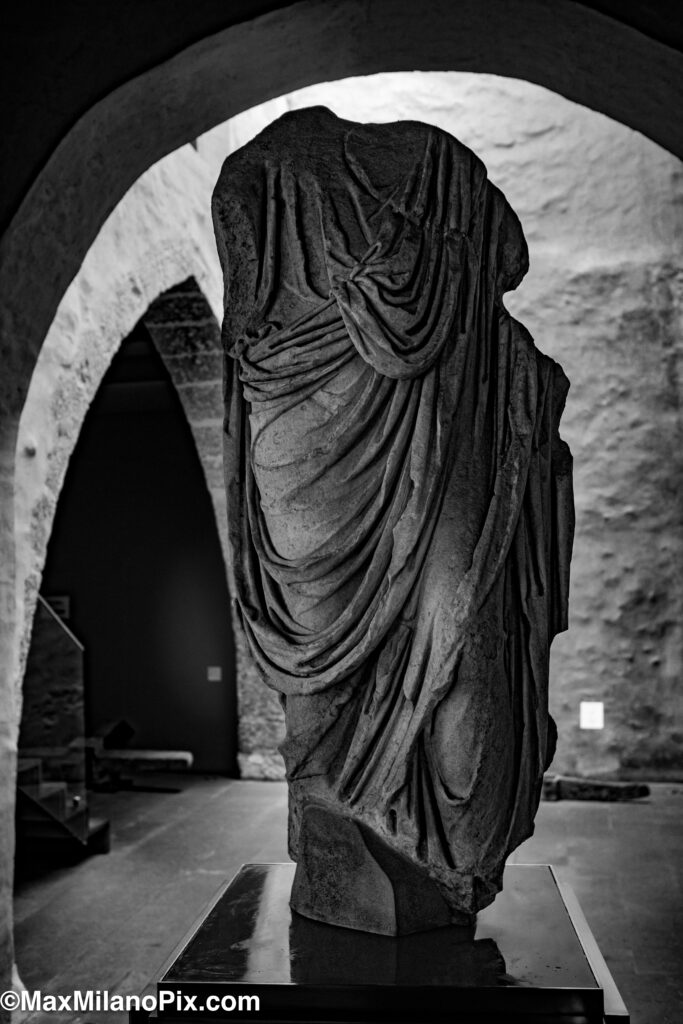
But once Sagunto was ash and bone, Rome acted. Because nothing fuels a burgeoning Roman Republic like righteous fury. By then, though, Hannibal had already used his momentum to march across Gaul and drag his elephants over the Alps to storm Italy.
Thus began the Second Punic War and Cato the Elder began ending every speech in the Senate, even the ones about taxes, with the famous line:
“Carthago Delenda Est.”
Carthage must be destroyed.
Eventually, it was. In the Third Punic War, Carthage was burnt to the ground by Scipio Africanus. The Mediterranean became a Roman lake. And it all started here. On this rock in Sagunto.
Michelin Stars and Moorish Walls
Sagunto today doesn’t advertise its greatness. It hums with it.
We wander uphill into the medieval heart of the town. Cobblestone lanes, sun-bleached facades, wrought-iron balconies. We pass through the arched gate of the old Saracen wall into the Jewish quarter, where a Michelin-starred restaurant sits quietly inside a former count’s palace.
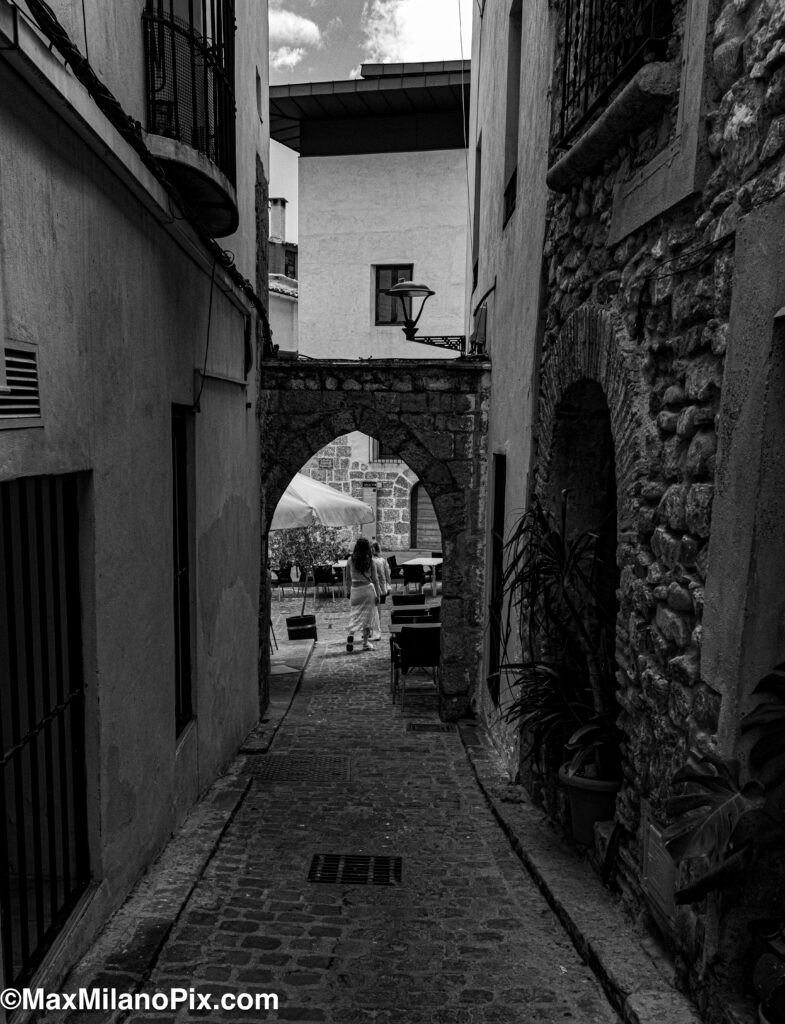
Outside, a chef smokes a cigarette and gives us a crash course in how the Crown of Aragon once ruled this coast and parts of Italy. And how the Catalans backed the wrong king during the War of Spanish Succession and helped the British take Gibraltar.
“We were supposed to be independent, or at least in a loose confederation with Castile,” he said, exhaling smoke, “but after the War of Spanish Succession, we’ve been losing our sovereignty ever since.”
In Spain, everyone’s a historian. Especially the chefs.
A Roman Theater with Plastic Surgery
The Roman theater sits just below the castle, carved into the hillside by engineers who believed in eternity.
It could seat thousands. You can still see the rows of seats, the perfect acoustics, the stage where Plautus’ slapstick dramas once played.
But someone messed with it.
In the 1980s, a “restoration” project layered the theater with poured concrete and industrial railings. Now it looks like a strange fusion of ancient Rome and a Soviet bus station. The locals are still furious.
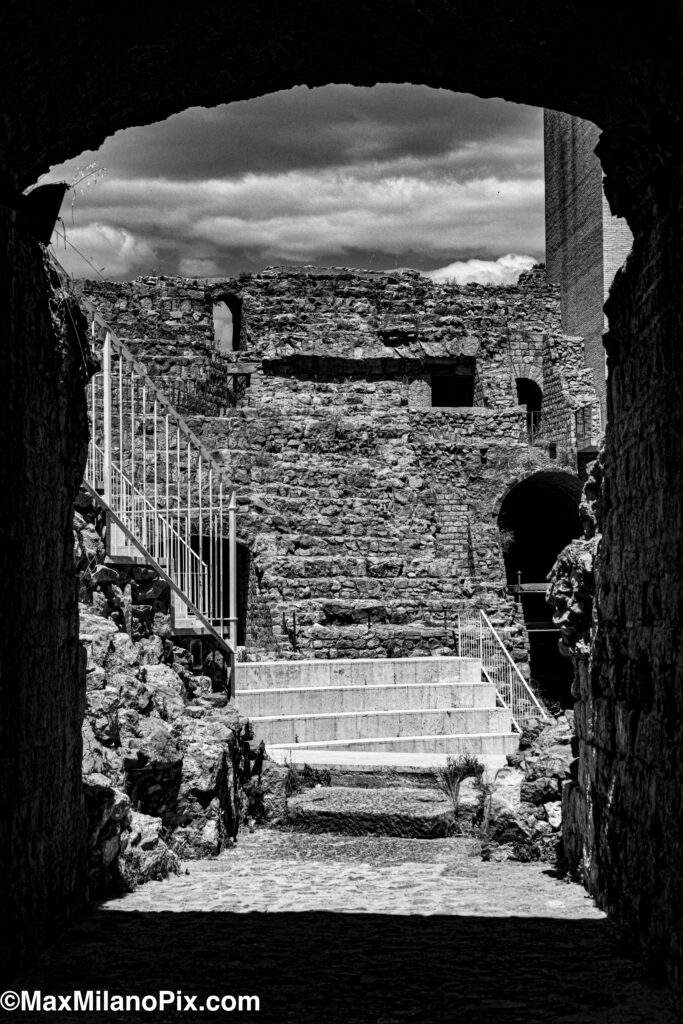
But Roman ghosts are still there.
You sit in those ancient seats, feel the sun cook your back, and you can almost hear the echo of senators whispering:
“Carthago delenda est.”
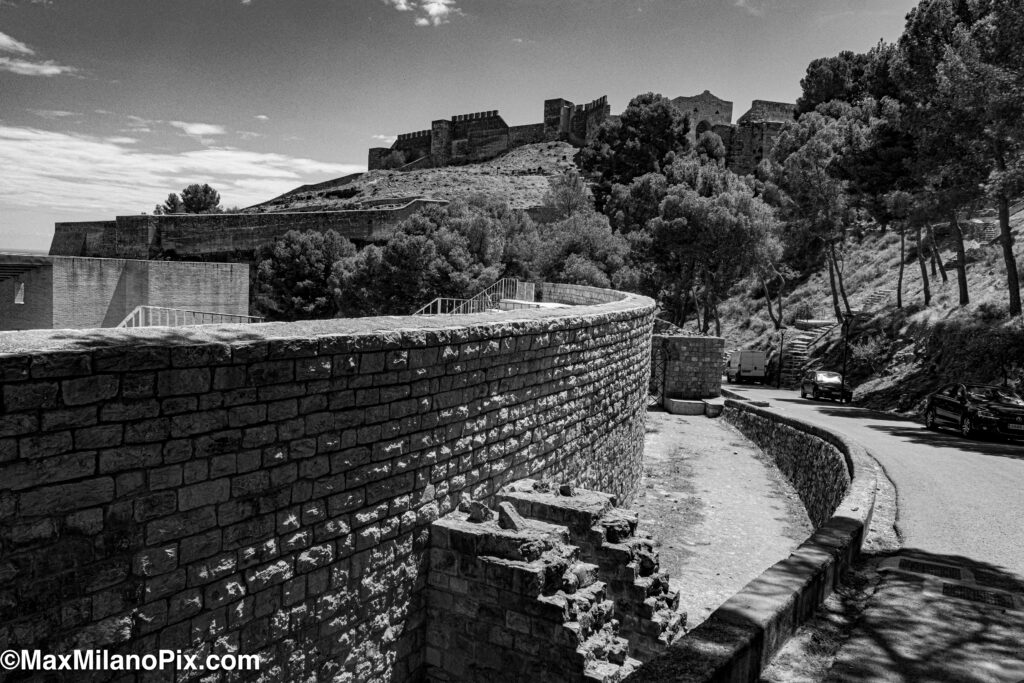
The Castle on the Hill
Climbing the hill to the castle is not for the faint of heart. Bring water. Bring shade.
But when you reach the top, the view knocks the wind out of you. The blue of the Mediterranean rolls out like silk. Inland, orange groves stretch to the horizon. And under your feet: 2,000 years of rubble and revelation.
The fortress is massive. Empty and wild. Broken Doric columns. Latin inscriptions on shattered stone. Bits of Roman tablets and medieval ramparts are scattered like rubble from a forgotten battle.
The Moors turned the Roman forum into a citadel. The Visigoths had their turn. The Christians added their layers during the Reconquista. The castle is not one building; it’s a conversation between centuries.
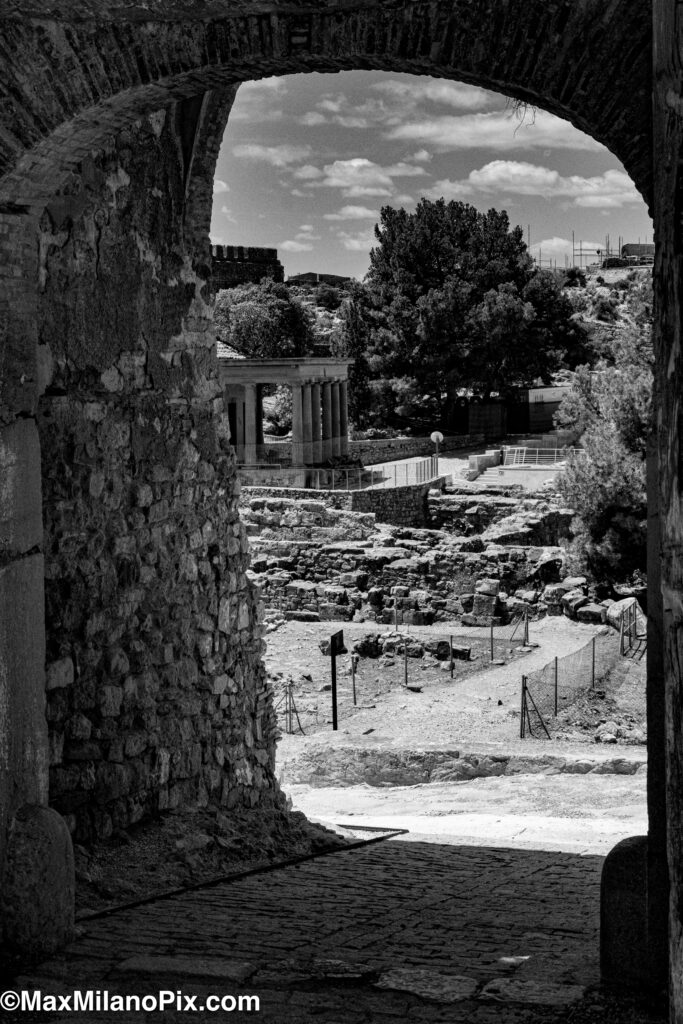
And it’s quiet. Shockingly quiet.
The ghosts here don’t moan. They watch. And they wait.
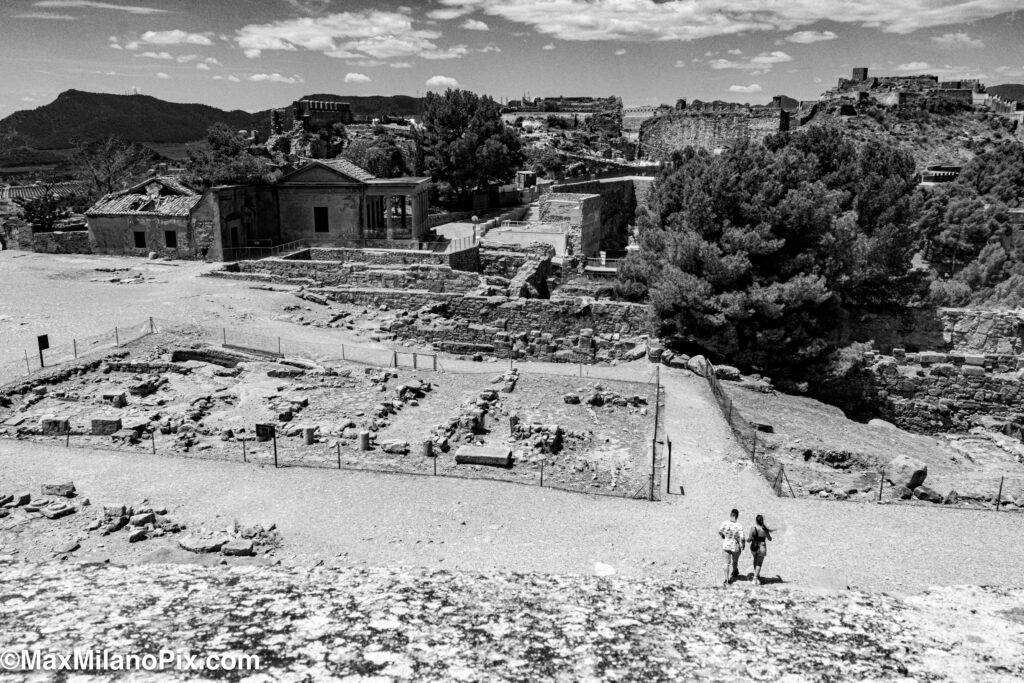
Golgotha and the Jewish Tombs
Below the castle, carved into the cliffside, are the Jewish tombs. Tiny rock-hewn chambers, just big enough to curl inside. They feel biblical. Like Golgotha. A silent reminder that three religions, Judaism, Christianity, and Islam, all coexisted here, leaving prayers etched into stone.
You don’t need a guidebook in Sagunto. You need eyes and ears.
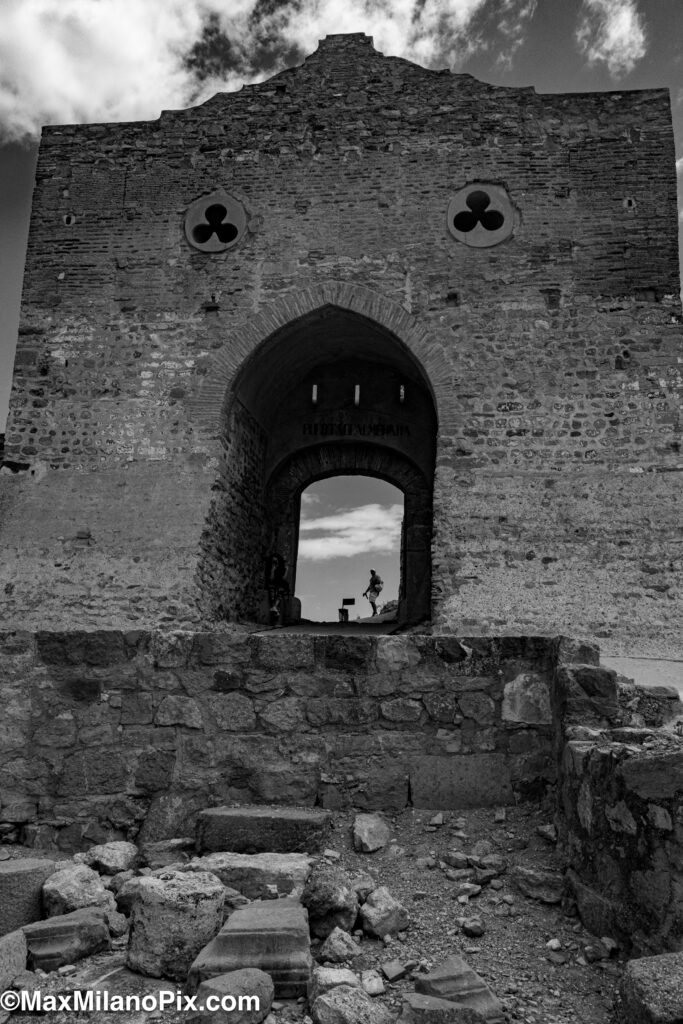
Roman Sagunto Lives On, Underground
Walking back into the modern town, a local waves us into the basement of an apartment building. Inside: a Roman road. The Via Augusta. Still there. Still whispering. Above, people argue about fútbol. Below, the echoes of Roman sandals on stone paths.
But there’s more.

The remains of a Roman circus where chariots once raced now lie beneath a schoolyard. And just outside town, orange groves hide the ruins of rustic Roman villas, mosaics, amphorae. Even a first-century triumphal arch still stands, right on the Roman road, because Sagunto sat squarely on the Via Augusta, the highway that once linked Cádiz to Rome.
From Saguntum to Sagunto: A Legacy of Loyalty
After Hannibal torched the city, Saguntum disappeared for a time. Rome didn’t rush to reclaim it. Instead, they went for the throat; New Carthage (modern Cartagena), where young Publius Scipio landed a knockout blow.
By 206 BCE, Carthage was gone from Iberia.
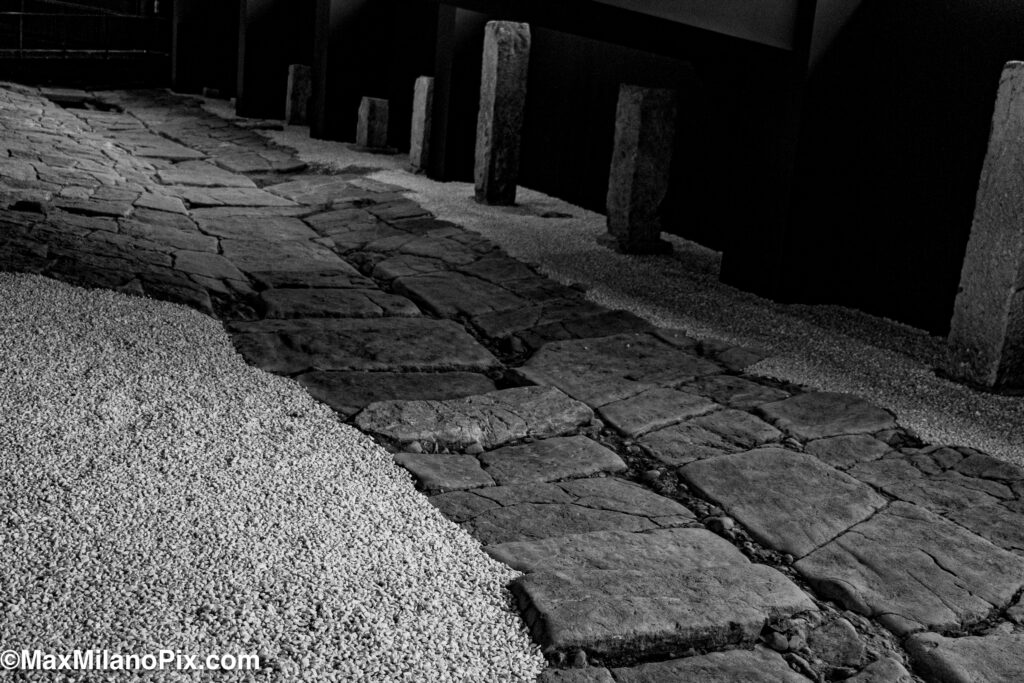
And Saguntum? Rome came back. Rebuilt it. Settled Roman citizens there. Gave it Latin rights. Turned a ruin into a colony. A thank-you for dying with honor.
By the 1st century BCE, Sagunto was booming again: theaters, forums, baths, and temples. Roman Sagunto wasn’t just restored. It was reborn.
And like everything in Spain, it changed hands: Visigoths, Moors, Christians. But the Roman roads and domus walls are still underfoot.

Don’t Skip Sagunto
Most people don’t stop in Sagunto. That’s fine. But if you do, you’ll find something special.
A town where ancient tragedy, medieval grit, and modern Spain swirl together in a single glass of wine.
You’ll meet Fallas cooks who’ll invite you to lunch without knowing your name. You’ll walk Roman roads beneath modern apartment buildings. You’ll climb a hill where a castle still stands, and you’ll hear echoes of empires in the wind.
And if you listen closely, you’ll hear that ancient warning, still echoing across the centuries:
“Dum Roma deliberat, Saguntum perit.”
While Rome deliberates, Sagunto perishes.
But not today. Today, Sagunto lives.
For more offbeat, brutally honest travel stories and expat survival tips, head to GuiriGuru.com and start living Spain from the inside out.
Max Milano is a travel writer and photographer based in Los Angeles, California, and Valencia, Spain. His latest photography book, Mexico City Noir, Life Under The Volcanoes, is Available on Amazon. His photographs are available at MaxMilanoPix.
Learnt more about Sagunto here than when I lived there for a couple of years. Lovely city and still revisit. Now it will be with eyes open wider. Thank you
Glad You Enjoyed The Blog. That’s why we started the “On the Roman Road” series, to show that Roman side of Spain that many visitors and expats don’t know exists. Stay tuned as we travel to all of the Roman ruins in Spain.
It’s very interesting the way you appreciate our history and our monuments. I’m happy you enjoyed your visit to my town. Thanks for your publication from a Saguntinian woman
Glad you enjoyed the blog! We always love visiting Sagunto. The people there have been incredibly welcoming to us, and the history never fails to fascinate.